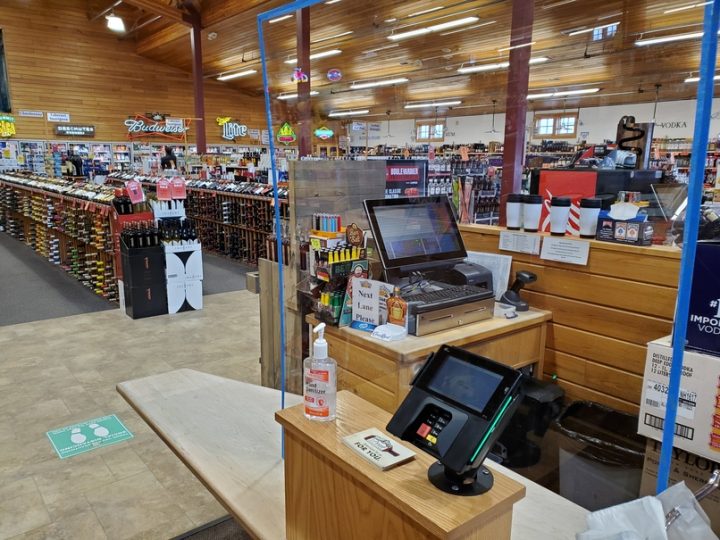
Throughout the past 12 grueling months of Covid, beverage alcohol retailers proved an essential economic channel to consumers and the industry. They installed Plexiglas at counters, practiced social distancing, kept stores sanitized, closed to in-store traffic when necessary, ramped up online technology, and met growing curbside and delivery demands. “Over the last 12 months we had to adjust our business on the fly to the many changes occurring real time,” says Dustin Mitzel, CEO of Happy Harry’s Bottle Shops, which has five units in North Dakota. “Our initial plan for 2020 was thrown out the window by March and we were no longer able to plan beyond what seemed like a week at a time. But luckily we quickly reset our expectations and rolled with the punches throughout the year.”
The unpredictable Covid-19 era officially descended Friday, March 13, 2020 with the declaration of a National Emergency. The beverage alcohol retail tier was first declared an essential service in New York on March 20. California and other states quickly followed suit. “Some of the issues included keeping our staff and customers safe, adjusting major sales campaigns that couldn’t safely be carried out during the pandemic, followed by months of spirits being out of stock,” Mitzel says.
Those shortages still persist. “The shortages of products, especially imported ones, continue to this day,” says Matthew Landolt, manager of Viscount Wine & Spirits in Wappingers Falls, New York. “While some items like boxed wine have caught up to demand finally, there are still issues with items such as Champagne and Tequila.”

Pandemic Changes
Many retailers saw consumers begin buying in bulk, particularly 3-liter boxed wines and 1.75-liter bottles of spirits. In Delaware, Kreston Wine & Spirits stores in Wilmington and Middletown have experienced a 20%-25% sales increase since last March. Top sellers were Hennessy Cognac VS ($95 a 1.75-liter) and Bota Box wine ($18 a 3-liter box). “Hennessy has probably had 100% growth though this whole thing. We sell quite a few 1.75-liters of Hennessy and it’s one of the items remaining on allocation,” says store owner Bob Kreston. “Boxed wines have also been on an upward swing during the pandemic.”
Although closed to in-store traffic since last March, The Wine House in Los Angeles has experienced strong sales growth. The store’s top-selling wine brands of 2020 were 2017 Petra Zingari ($15 a 750-ml); 2018 Kali Hart by Robert Talbott Vineyards Chardonnay Monterey County ($16 a 750-ml.); and 2019 Bodegas Atalaya Laya Almansa ($7 a 750-ml.). “We were surprised the first three months of the outbreak with the number of online orders and amount of wine, beer, and spirits being consumed,” says owner Glen Knight.

As Covid-19 regulations enter their second year, Knight is working to continue keeping his employees and customers safe. He and nine of his employees received their first vaccine dose near the end of February, and all of his employees are slated for vaccines. In New York, Landolt and many of Viscount’s employees plan to get vaccinated as soon as they become eligible. “We need to make sure we continue to keep our staff healthy and safe until the pandemic is over,” Landolt says.
Kreston and his employees also plan to get vaccinated. “I’m hopeful this month we’ll be able to get in with the essential workers such as grocery store workers,” he says.
And while conditions are improving, booming retail sales last spring are unlikely to be repeated. “In March, April, and May, we were seeing sales increases from 40%-50%,” Kreston says, noting that the chain was even out of Jose Cuervo Tequila Especial Gold ($17 a 750-ml.) and Patron ($46-$475) for Cinco de Mayo. “When Pennsylvania shut down, we picked up a lot of additional business. We thought we could shut down next. People panicked and bought an exuberant amount of products.”
With bars and restaurants still not operating at capacity, retail sales remain robust. “The biggest challenge is forecasting our buying because there’s no way we’re going to have the numbers and sales we had last spring,” Kreston says.
Knight, meantime, hopes to re-open to in-store traffic in mid-May as Los Angeles’s Covid-19 numbers steadily decrease. “We missed all of our classes and events, which add up to close to $750,000 in annual ticket sales, last year,” Knight says. “We need to re-organize the front of the store, get the sales floor prepared, and figure out what to do for the consumers still nervous to shop indoors.”